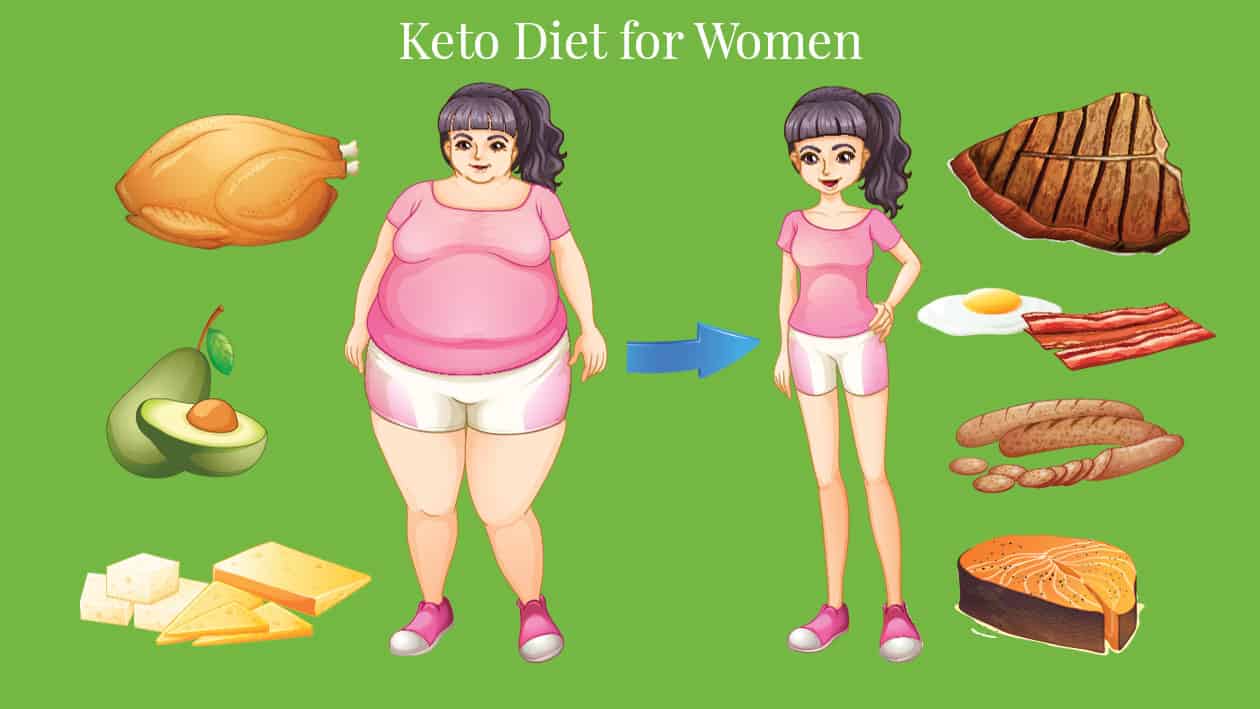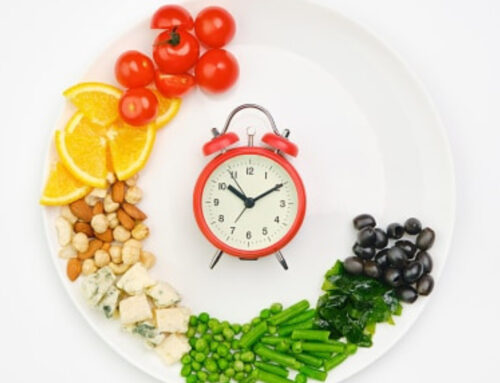I have news for you: women need to do the ketogenic diet differently than men.
If you’re a woman who’s eating low carb, high (good) fat meals and fasting for extended periods, you’re practicing some great strategies to temporarily lose weight, create endless energy, and give you ridiculous mental clarity.
But these same practices are harming one crucial piece of your health: your hormones.
Now, before I confuse you, let me explain myself. Those of you who know the keto diet well know that it can make a tremendous difference with the hormone insulin. And there is no better way to get yourself out of insulin resistance than fasting mixed with the keto diet.
But you have two other key hormones you need to think about: estrogen and progesterone.
Your body actually needs insulin to make estrogen, AND it needs cortisol levels to be low to produce progesterone.
If you have been intentionally eating low carb and fasting for extended periods in order to lower your insulin levels, you may be noticing symptoms such as:
- anxiety
- inability to relax
- insomnia
- hair loss
- muscle loss
- chronic constipation
- stubborn belly fat
- bloating
So, what’s going on? And how can you, as a woman, maximize the keto diet and avoid its pitfalls?
Five Crucial Reasons Keto for Women Can Misfire
1. Starting keto the week before your period
From day fourteen of your cycle until right before you bleed, your body needs progesterone. Progesterone is the hormone that allows the uterine wall to shed. It is also your anti-anxiety hormone. Without adequate levels of progesterone, not only will your cycle be off, but your PMS symptoms can be at an all time high.
Irritability, panic, anxiety, spotting… these are all signs of low progesterone.
There are two ways to help your body increase progesterone levels.
The first way is to eat foods that help your body make more progesterone. Many of these foods are higher in carbs. Foods like:
- Mangoes
- Papayas
- Oranges
- Beans
- Russet potatoes
- Quinoa
These are foods a strict keto diet doesn’t allow. But without these higher carb foods, your body will be left without the resources it needs to make progesterone.
The second way to raise progesterone is to lower cortisol. Low carb diets combined with intermittent fasting have been known to raise cortisol.
MY RECOMMENDATION: To maximize the results of the keto diet for women, increase your smart carbs a week to two weeks before your period.
2. Fasting the week before your period
Fasting rocks! I’m not going to lie. I have seen miracles happen when people start catching the fasting bug. When you take food out of the equation, your body heals.
But the most difficult time to fast is the week before your period.
You may have already noticed this. If you have been fasting for a while with great success, you may be surprised when – out of the blue – fasting becomes difficult for you. I hear this all the time from women who are experienced fasters.
If this is you, look at the time of the month you are fasting.
Your body needs insulin to make estrogen. So if you are not eating, you are not getting enough insulin. And this can mess with your estrogen levels. Fasting also raises your cortisol levels, which will decrease progesterone.
MY RECOMMENDATION: Skip all types of fasting the week before your cycle.
3. Not eating enough vegetables
One of the biggest challenges I see many women encounter with the keto diet is they don’t eat enough vegetables. They fear the extra carbs.
But carbs from vegetables are really important for the good bacteria in your gut.
This is why I created the ketobiotic diet for women.
You have good bacteria in your gut and they need to be fed prebiotic fibers from foods such as:
- asparagus
- leeks
- garlic
- onions
- artichokes
- tomatoes
If you are avoiding these critical prebiotic fiber foods, then your good bacteria will die.
Good bacteria in your gut produce neurotransmitters that calm your brain, make you happy, build your immune system, and give you energy. You need these little critters! They are crucial for your physical and mental health.
MY RECOMMENDATION: On a keto diet for women, you must eat your veggies. While many keto diets recommend you keep your carb count below 20 grams, I start my patients off with keeping their daily carb count under 50 grams net carbs. To find the net carbs in a food, subtract the fiber grams from the carb grams. This leaves plenty of room to get the veggies you need to feed your good bacteria.
4. Eating the same foods over and over
This is a super common mistake I see women make with the keto diet. I already addressed why and when you need more carbs, but diet variation goes way beyond the week before your period.
Every time you try a healthy new diet, your body will adapt. With the keto diet it usually means your shape starts changing, your energy goes up, and you get more mentally clear. But if you keep eating the same foods over and over, your body will stop adapting.
I’ve even seen this happen often with the members of my FB Resetter group. Once a month, we all do a 5-Day fast together. Although it’s usually difficult, when people first fast, they are often blown away by how quickly their body adapts and feels great.
Because of these great results, they often keep trying more and more fasting. Eventually they get stuck. Then they become frustrated.
MY RECOMMENDATION: The keto diet for women requires more variation. When I start a client out with a new eating plan, I teach them what it means to go keto for their specific needs. Once they have a grasp of that, we vary it. We throw in fat days, protein days, feast days, fasting days, probiotic days, amino acid days, mineral days, and antioxidant days. I teach them how to vary their diet and not get stuck in a rut eating the same thing over and over again.
5. Not supporting the liver
Many women come to the keto diet to lose weight. And many women will, indeed, lose weight quickly. I call it a shape shifting diet. Because you train your body to become a fat burner, your body will grab fat from around your waist, your hips, your chest, your belly, even your face and then burn it up to create energy for your body. It’s a beautiful thing.
But if this has not been your experience on the keto diet, you may be neglecting one key organ: your liver.
Years ago, back in your high carb days, your cells became inundated with glucose from the foods you ate. This caused your cells to become insulin resistant. Not being able to store glucose in your cells, your body had to store this extra glucose somewhere. So it stored it in your liver. You kept eating high carb, so it kept storing it in your liver. Once the liver got full, it stored it as fat in your body.
When you first go keto, you repair your cells. They become insulin sensitive again. But for many of you, you need to help your liver out. It’s congested, and it needs support in order to dump the stored glucose you’ve given it over the years.
MY RECOMMENDATION: There are many ways to support your liver. Liver supplements like Ls, L-liver, and L-b by Systemic Formulas are key to getting your liver to release stored glucose again. For some of you this will work miracles, and for some of you will need more. Tools like coffee enemas and infrared saunas will help your liver out tremendously and get you the results you are looking for with the keto diet.
Keto for Women: Can it Work for You?
If you are a woman and want the healing miracles the keto diet can offer, I highly recommend that you are careful not to fall into any of the above traps. The keto diet can be an incredible healing tool. But, as a woman, you have to be aware that you need to approach it with a few different twists. Also, if you are in menopause, make sure to read this post that gives additional tips specific to your time of life.
To get more guidance with your keto diet, join my Resetter Tribe on Facebook. You’ll find incredible support in this group filled with women just like you!









Interested in keto information for those of us in menopause is there a specific place for that info? Please and thank you
Hi Bonnie!
You can download the guide here >> https://drmindypelz.com/ketobiotic-reset-for-women/
Mindy – can you add the link to the article for menopause? Thank you!
HI Mary!
Thanks for your feedback.
Here’s the link https://drmindypelz.com/is-the-ketogenic-diet-helpful-or-harmful-for-menopausal-women/
I’ve also added the link on the article already.
Hi Dr. Mindy, what about if you have an IUD and don’t get a period?
THIS!!^^ Asked the same question on the facebook page, but haven’t gotten an answer!
i need more info for post menopausal, please
Here’s the link https://drmindypelz.com/is-the-ketogenic-diet-helpful-or-harmful-for-menopausal-women/
please specify more specifics for post menopausal women.
Hi Mary,
Dr. Mindy wrote an article about keto diet for Menopausal women.
Hi. I submitted my email on the link…but didn’t recieve the guide to keto reset
My husband and I are both having trouble getting rid of belly fat. I see what I can try now, but what about for a man who also has to supplement testosterone every 2 weeks? Please help.
Hi Debbie,
We have a 21-Day Ketobiotic Reset inside our Reset Academy, you might want to check it out. Here’s the link: https://resetacademy.drmindypelz.com/
Hi…
Please clear my mind on this matter.
Day 1 to Day 7 is the menstruation periods of a woman in our menstrual cycle….i have watched a lot of Dr. mindy’s videos…Does she say that from Day 1-12 a woman with a regular period can actually fast and even perform a 3-5days fasting?
Is it safe then to go to extended fasting on our montly periods?
Post menapausal info too please.
Here’s Dr. Mindy’s article about Keto diet for Menopausal women
https://drmindypelz.com/how-menopausal-women-can-optimize-their-hormone-production-on-the-ketogenic-diet/
Menopause is challenging for me too.
Please send the link thank you
Here’s the link to the article https://drmindypelz.com/is-the-ketogenic-diet-helpful-or-harmful-for-menopausal-women/
Please send me the women’s health video link. Thank you.
You can watch the video here https://drmindypelz.com/ketobiotic-reset-for-women/
Good day doc
Greetings.
I was looking exactly for this info on autophagy that you gave me in your video.
I am a male diabetic person (in my early sixties) for the last 15 years and want to try out IF and ketodiet together to reduce/eliminate my insulin resistance to get trid of my diabetic medicines for the rest of my life.
Need tor further help how achieve my targets.
Many thanks in advance.
I would suggest you to try my 21-Day Ketobiotic Reset, here’s the link for more info about this Reset. https://resetacademy.drmindypelz.com/courses/21-day-reset
What is the best app for carb counting
Hi there! We like the app Carb Manager.
Hi Mindy,
From your#”1. Starting keto the week before your period
From day forteen of your cycle until right before you bleed”. Does it mean no KETO 2 weeks before you bleed?
Since you recommend to eat smart carbs, it will kick us off the ketone, right?
I am confused!
Regards,
BK
Hi Bee,
Before our period we need to up our progesterone be eating good carbs.
Dr. Mindy explained it here on this video. https://youtu.be/qjEWdM7hfSE
Women’s health
My biggest struggle has been to not revert back to eating chocolate when I am getting PMS. Although I am menopausal I still get that sugar craving and then my mind is overrun with getting sugary things to eat. These days it is chocolate mousse. I know giving in messes up my whole attempt to loose weight. I have been struggling with weight all my life
The choclate craving could be due to a bodycraving for magnesium. Try a magnesium and or chrome supplement and switch to 70-80% sugarfree chocolate. Best of luck
I have watched lots of Dr. Mindy videos lately. I joined Resetters on Facebook. I am 57…. doing great with IF and keto. I vary my Fast’s from 19 to 36 to even 48 hours. Weight just doesn’t come off. Saw a video where she suggested 3 things I might be doing wrong- one was too much protein. She suggested 20 grams.. is that 20 grams a day?
Yes, that’s correct 20g per day.
LOVE what you do and all the amazing information you gave. I was blessed enough to listen to your interview on the Non-Toxic Beauty Revolution. THANK YOU THANK YOU THANK YOU!!!
I want to do the intermitten fasting as you suggested and I have a question for you. I had a hysterectomy but I still have my ovaries. How do you suggest that I know when my “period” would be so that I can understand the eating pattern?
Thank you for all you do and your wonderful knowledge.
Andrea Jones
You might be able to track body temperature and vaginal fluid texture just like people trying to get pregnant.
Hi, Ive been wathing on YT a lot of videos from dr.Mindy, but I am rather confused about estrogene building vs. progesterone building foods (days 12-14 vs 21-28 of ones menstrual cycle). Also, there is a list mentioned during couple of videos, where can I get that list?
Hi Mindy! I just finished your book and am LOVING the podcast. I would love a link to the workshop. Thx????????????????
Lienne
All this is very helpful when you when your period starts. I have IUD, I am not menopausal, I literally do not know when my period starts. Is there a link somewhere for those of us who do not have “visible” period, but not menopausal yet? Thanks
Hello,
I am looking to do a vegan keto IF for women. I also don’t have a period but am not menopausal yet. How do I start and how do I do this right please?
Thank you